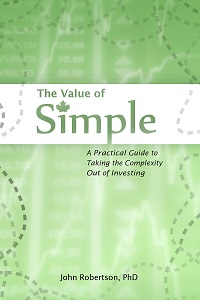GE
April 11th, 2008 by Potato“It’s a good patient money buy. It’s a great company that isn’t going anywhere. If I was setting up a portfolio for a widow, GE would be at the top of my list of picks… but I think it might be too conservative for you.”
This was the gist of what my dad had to say when I called him this morning to talk about GE, which just reported some disappointing first-quarter results. I’ve been keeping an eye on GE for a while, figuring that I would buy in around $32 (of course, the few days when it was that low the market was hiccuping so bad I was scared away, even though I shouldn’t have let fear affect my buying), which is where I decided that there was very little downside. At the moment, GE has gone down over 10% on the earnings news to trade at just a hair below $33 (US), which is close enough that I’m seriously thinking about it again.
For one thing, it neatly patches a hole in my diversification. Since I am young* and open to taking risks, a lot of my non-index portfolio is in some risky stocks (such as Q, QSR.UN, and banks — which shouldn’t be this risky!) in hopes of getting higher returns. But I’m still not willing to suffer too much of my portfolio in high-risk things, so I also have some safer stuff (FCE.UN, YLO.UN), but my portfolio is nonetheless really poorly diversified as I mentioned in a previous post about index funds. There looks to be a place at the table for GE, though perhaps my biggest argument against that is that any patient money I could put in GE I could equally put into an index such as the DJIA. Of course, some that patient money is sitting in my high-interest savings account at the moment making a lousy 3.35% (why does that slide down more every week I check it PCF?!), while GE is offering a famously stable dividend of 3.8%. I also think that it might outperform the index for a while.
There are two reasons I might think that. The first is that it might be oversold today after this report. There are some worrying signs in it: GE missed forecasts, and more importantly, profit was down while revenue was up, so something troubling happened to their profit margins/efficiency there. However, a part of the let-down was certainly related to the financial sector/credit markets lately, and I think that’s going to be a temporary issue, offering them a big chance to rebound (note that when discussing my patient money, temporary could be up to 2 years). GE, being a massive conglomerate with its fingers in just about all the pies, also has a wind turbine and nuclear generator division, which I think could be big winners in the decades to come. Of course, being a massive conglomerate it’s hard to say if those winners will be enough to raise this massive company to outperform the indexes, but my hopes are high.
* – or so I continue to believe, in spite of grey hairs and bald spots.
Update: I haven’t even posted this yet, but GE dipped more into the $32.50 range, so I bought some at $32.53. The exchange rate fee (2%, ouch!) makes me think I may have been better off with that index fund after all.




 Questrade: ETFs are free to trade, and if you sign up with my link you'll get $50 cash back (must fund your account with at least $250 within 90 days).
Questrade: ETFs are free to trade, and if you sign up with my link you'll get $50 cash back (must fund your account with at least $250 within 90 days).  Passiv is a tool that can connect to your Questrade account and make it easier to track and rebalance your portfolio, including sending you an email reminder when new cash arrives and is ready to be invested.
Passiv is a tool that can connect to your Questrade account and make it easier to track and rebalance your portfolio, including sending you an email reminder when new cash arrives and is ready to be invested.